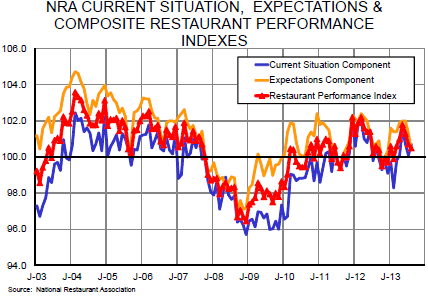



CME: Effects of Financial Shutdown on Dairy, Livestock Products
US - CME Group released a statement today regarding the federal government shutdown and its potential impact on the exchange’s dairy and livestock products, write Steve Meyer and Len Steiner.As with everyone else, the exchange is concerned about a prolonged cessation of price reports that would reduce the information available to market participants and eventually impact the settlement process when Lean Hogs and Feeder Cattle futures and options contracts expire.
One bullet was dodged today when it was announced that ten (10) Federal Milk Marketing Order prices would be released tomorrow. Those prices will allow the final settlements of September CME Milk, Cheese, Butter, Whey and Nonfat Dry Milk futures and options as scheduled. The exchange did not offer an explanation on how these milk prices would be published with supposedly everyone at AMS out on furlough but we don’t think anyone will look the gift horse, or cow (sorry, couldn’t resist that cheesy one), in the mouth.
CME Group’s statement pointed out that a prolonged shutdown would create gaps in reporting key agricultural pricing data. Such information shortages could impact the October 2013 Lean Hogs settlement on 15 October and the October Feeder Cattle settlement on 31 October. While the statement listed Live Cattle settlement as a potential problem, we are not sure that is the case since Live Cattle is a deliverable contract and is not dependent on reported prices for cash settlement. Further, the USDA graders who are integral to the cattle deliver process are still on the job since they are fee-based (ie. packers pay for meat grading) and technically not government funded. Should data still not be available on October 15 for Lean Hogs and 31 October for Feeder Cattle, the exchange warned that it may have to “modify the current settlement procedures” for the affected products.
CMEGroup’s statement can be found on its website (www.cmegroup.com) and current settlement procedures can be found here. Customer inquiries should go to David Lehman, Managing Director,Commodity Research and Product Development (312-930-1875, david. [email protected]); Jack Cook, Director, Commodity Research and Product Development (312-93-3295, [email protected]); or Tom Clark, Director, Commodity Products (312-930-4595, [email protected]).
Are there any alternative price reports available to producers, packers, processors and, eventually, CME Group? The answer is yes — for some things. CattleFAX has for many years provided price information to its members based on the members own reported prices. For a few days at least, the Denver-based information cooperative may be about the only game in town for broadbased fed cattle and feeder cattle price data. Local feeder and stocker cattle markets are an entirely different matter, however, where we may see a significant void in the short run. Express Markets (and EMI Analytics) has become a major source of price information for the poultry industry. Their information on pricing, supplies, etc. is provided only to their subscribers. Urner-Barry, the long-time publisher of The Yellow Sheet, has been a authority on seafood, poultry and egg prices for years and has a significant reporting system for beef, pork and lamb as well. Their service is also on a subscription basis. There are others who may have some facets of original price reporting but one thing is clear: The data are not free!
The National Restaurant Association’s Restaurant Performance Index (RPI) declined for the third straight month in August. The index fell 0.2 points from its July level to land at 100.5. The decline was driven by a 0.9 point drop in the Expectations component which measure the outlook of operators for the next six months. The Expectations Index is itself comprised of four indicators — Same- Store Sales, Staffing, Capital Expenditures and Business Conditons — all of which declined in August form their July levels. The largest decline was for Staffing expectations (down 1 point) and the second was expectations of Same-Store sales which fell by 0.8 point. The other part of the RPI, the Current Situation Index, rose by 0.6 point in August. Current levels of Same-Store Sales and Customer Traffic were the big contributors to the gain. The percentage of operators who expect lower sales volume in the next 6 months rose from 9 per cent in July to 17 per cent in August.
While much of that news is negative, it is important to note that the RPI was above 100 for the sixth straight month. The RPI is constructed such that values above 100 indicate expansion of the restaurant sector while values below 100 indicate contraction.









